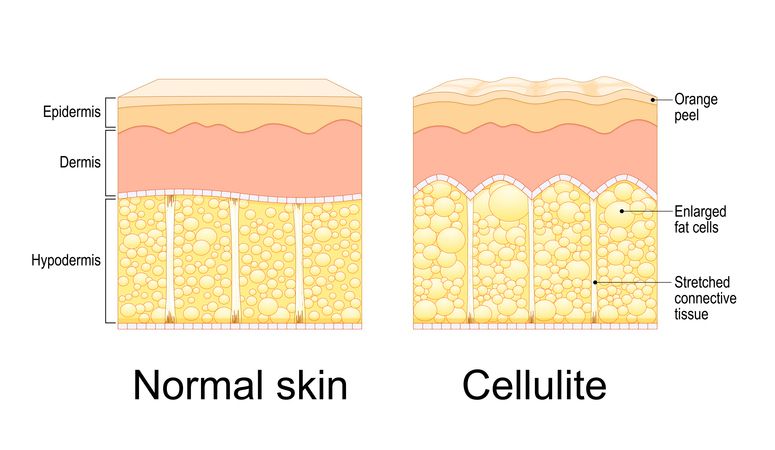Author: Natalie Ng|Updated: 7 May 2025
You might count on your morning cup of coffee to feel alert and get through the day, but your skin might not be as thankful for it. If you’ve been noticing more breakouts, dryness, or skin redness, your caffeine intake could be playing a role. Drinking coffee—especially with cow’s milk or excess sugar—can lead to dehydration, mess with your sleep, and throw off your hormones. All of that can show up on your face as acne, dull complexion, or even fine lines. Caffeine can also affect how your skin reacts to topical products and how it absorbs nutrients. Whether you're sipping tea, coffee, or other caffeinated beverages throughout the day, it might be worth thinking about how much you’re really having—and what that means for your skin. Keep reading to learn how your daily coffee consumption and caffeine habits could be linked to common skin problems, and what to look out for.

Caffeine Can Dry Out Your Skin
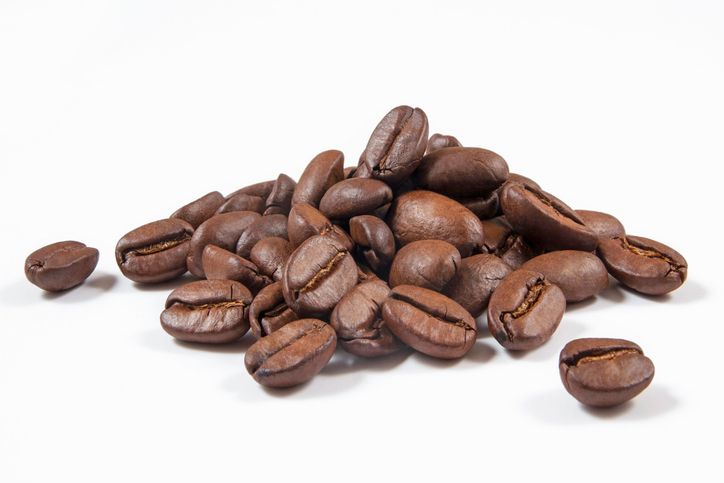
Caffeine pulls water from your body, which can leave your skin feeling dry and tight. While your morning coffee might help you feel alert, it can also increase fluid loss if you’re not drinking enough water throughout the day.
Why dry skin happens
Caffeine has a mild diuretic effect. That means it makes you urinate more often, which lowers your body’s water levels. If you’re drinking coffee or tea regularly and not replacing that fluid, your skin may lose moisture. This can make your face look dull and cause fine lines to appear more noticeable.
Caffeine, dehydration, and skin texture
Too much coffee, especially without enough water, can reduce the amount of moisture your skin holds. That affects skin elasticity—how firm and smooth your skin looks. Over time, dehydrated skin can lead to wrinkles or a rough texture, especially around the eyes and mouth.
What makes it worse
Other factors—like alcohol, sugar, and not eating enough hydrating foods—can make caffeine’s drying effect more obvious. If you often pair your coffee drink with dairy milk or sweetened creamers, you may also notice inflammation or acne, especially if your skin is sensitive to cow’s milk or excess sugar.
If your skin feels dry or looks dull and you’re drinking several cups of caffeine daily, it could be a sign that your hydration is off. Paying attention to your water intake, sleep quality, and diet can help balance the effects of coffee consumption on your skin.

Caffeine Raises Cortisol, Leading to Stress Breakouts
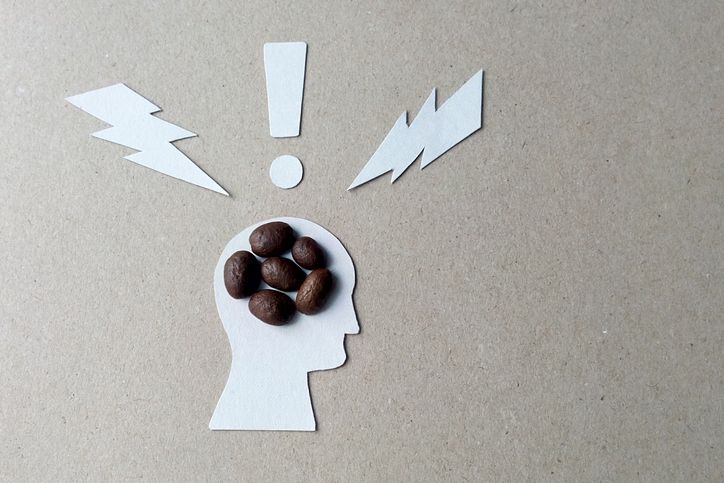
Caffeine stimulates your nervous system and increases cortisol, the stress hormone. This happens quickly after drinking coffee or other caffeinated beverages. While this can help you feel alert, it can also impact your skin—especially if you’re sensitive to hormonal changes.
How cortisol affects your skin
When cortisol rises, your body starts producing more oil. Your sebaceous glands respond by creating excess sebum, which can clog pores and lead to acne. This is especially noticeable on the face, back, and chest—areas where the skin produces the most oil.
More cortisol, slower skin healing
High cortisol levels can also weaken your skin’s natural barrier. That means your skin becomes more reactive and slower to heal from breakouts. Inflammation might last longer, and small blemishes may turn into larger, more painful spots.
The stress-skin cycle
Caffeine can also increase anxiety in some people, which adds to the stress your body already feels. If you’re dealing with work pressure, lack of sleep, or emotional stress, your skin may react even more strongly to caffeine. This can create a cycle where caffeine leads to stress, and stress leads to breakouts.
If you’ve been breaking out more often and you're drinking a lot of coffee or tea, it might be worth tracking how your skin reacts. Reducing caffeine intake or switching to decaffeinated coffee could help break the cycle.
Read More
Book Now to Experience
Acne Treatment
1 Minute Self-Registration
Date should not be before minimal date

Caffeine Disrupts Sleep and Makes Dark Circles Worse

Your skin repairs itself while you sleep. If you're not getting enough rest, your skin starts to show signs of stress—especially under your eyes. Drinking coffee or tea late in the day can interfere with your sleep quality, making dark circles and puffy eyes more noticeable.
How caffeine affects your sleep
Caffeine stays in your system for several hours. If you drink it in the afternoon or evening, it can delay your natural sleep rhythm. That means it’s harder to fall asleep and stay asleep. Over time, poor sleep affects how your skin looks and feels.
Tired skin looks dull and older
Without deep sleep, your body can’t properly produce collagen or repair skin damage. This may lead to a dull complexion, fine lines, and slower skin recovery. You might also notice more puffiness and dryness around the eyes.
Why dark circles and eye bags appear
When you don’t sleep well, blood flow under the eyes becomes more visible. The skin in this area is thin, so dilated blood vessels create that shadowy, tired look. Fluid can also collect under your eyes, leading to puffiness that exaggerates dark circles.
Even though caffeine is used in topical products to reduce redness and puffiness, drinking too much coffee—especially late in the day—can still affect your sleep and, indirectly, your appearance.

Too Much Caffeine May Affect Collagen and Speed Up Aging Signs
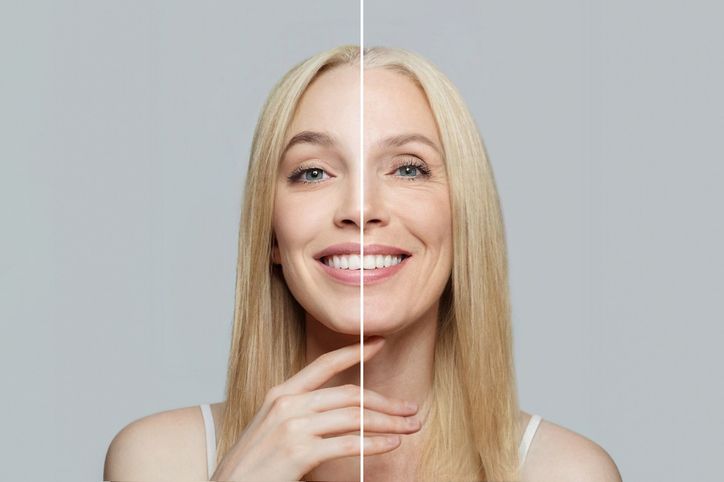
Your body needs collagen to keep skin firm and elastic. While moderate coffee consumption has some health benefits, drinking too much coffee or consuming caffeine in high amounts every day may impact how your skin maintains collagen over time.
Caffeine and collagen production
Some research suggests that consuming caffeine in large amounts can interfere with how your body repairs collagen. This protein keeps your skin smooth and helps prevent wrinkles. If collagen breaks down faster than it’s replaced, fine lines can appear earlier and skin may start to sag.
Dehydration makes aging signs worse
Caffeine’s drying effect can make your skin look more tired and less plump. Dry skin shows wrinkles more clearly. Without enough moisture, your skin loses volume, and lines that weren’t noticeable before may start to show.
What about topical caffeine?
Caffeine that’s applied topically—like in creams or eye serums—can actually help reduce redness and puffiness. It works by tightening blood vessels and calming inflammation. But these benefits don’t cancel out the effects of drinking too much caffeine or skipping water throughout the day.
If you're concerned about fine lines or dullness, check your caffeine intake and make sure you’re drinking enough water and getting quality sleep. These factors all work together to protect your skin's collagen.
Book Now to Experience
Acne Treatment
1 Minute Self-Registration
Date should not be before minimal date

Caffeine Might Trigger Hormonal Acne in Some People
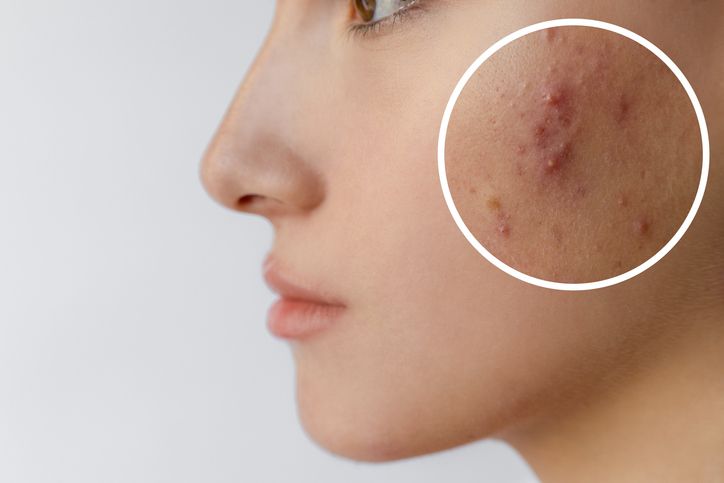
Caffeine doesn’t directly change your hormone levels in most cases, but it can still influence breakouts—especially around your chin and jawline. These are common spots for hormonal acne. While your daily coffee habit might not be the main cause, it can affect other systems in your body that impact skin health.
Indirect effects on hormones
Caffeine raises cortisol levels, and this stress hormone can indirectly affect your other hormones, especially if you’re not sleeping well or feeling anxious. These changes may cause your skin to produce more oil, which can lead to clogged pores and acne.
Add-ins that make it worse
What you put in your coffee drink also matters. Dairy milk and excess sugar are often linked to skin problems like inflammation and breakouts. Cow’s milk can affect some hormone levels, and sugar can spike your blood sugar—both of which may worsen acne for some people.
Look at the full picture
If you’re breaking out regularly, especially around the lower face, try tracking not just your caffeine intake but also what else you're adding to your drinks. Switching to unsweetened or decaffeinated coffee and using milk alternatives may help reduce flare-ups.

Caffeine Can Cause Blood Sugar Swings That Affect Your Skin
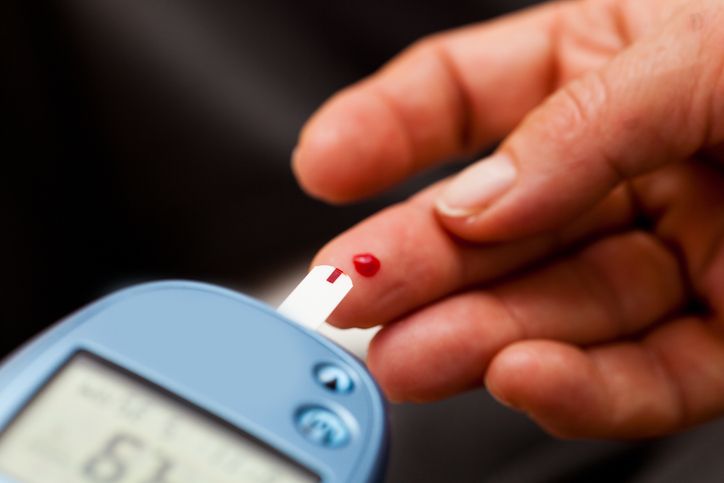
When you consume caffeine—especially with sugary drinks or on an empty stomach—it can lead to changes in your blood sugar. These spikes and crashes may increase oil production and inflammation, which often leads to breakouts, redness, or irritation.
Caffeine alone isn’t the problem
Black coffee or unsweetened tea on their own don’t usually cause major blood sugar changes. But if you’re adding flavored syrups, sweeteners, or drinking coffee with high-sugar foods, it can cause a quick rise in blood glucose. Your body then releases insulin, which can stimulate your skin to produce more oil.
Inflammation and breakouts
High insulin levels from excess sugar can lead to skin inflammation. This shows up as acne, redness, or flare-ups of existing conditions. You might notice more breakouts around the mouth or chin when you're regularly having sweet coffee drinks or pairing them with pastries and snacks.
Managing cravings helps your skin
Caffeine can also increase cravings for sugary foods, especially when consumed in large amounts. If you’re feeling the urge to snack on sweets after your coffee, it might not just be habit—it could be your body reacting to those quick blood sugar changes.
Watching your overall diet and choosing lower-sugar beverages can help prevent these skin reactions. Let me know when you’re ready to continue.
Book Now to Experience
Acne Treatment
1 Minute Self-Registration
Date should not be before minimal date

Caffeine Can Make Your Skin More Sensitive and Red
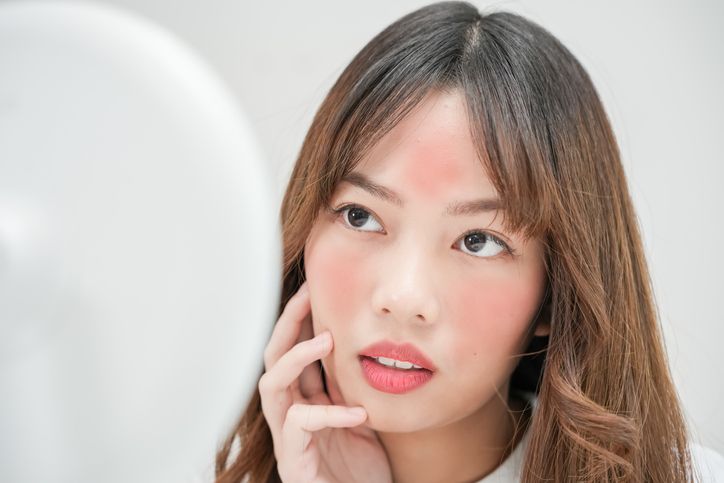
If your skin often feels irritated or looks flushed, your caffeine intake might be part of the cause. Drinking coffee or tea can trigger skin sensitivity and redness in some people, especially when paired with stress or poor sleep.
How caffeine affects skin sensitivity
Caffeine increases cortisol, which can heighten your body’s stress response. This may make your skin more reactive, especially if it’s already prone to conditions like rosacea or eczema. Some people notice that their skin becomes red, itchy, or warm after drinking coffee.
Dehydration adds to the problem
Caffeine also acts as a mild diuretic. If you’re not drinking enough water, your skin barrier can become weaker. A damaged skin barrier leads to dryness, tightness, and more sensitivity when using skin care products or being exposed to sunlight and temperature changes.
Pay attention to skin reactions
If you experience frequent redness or irritation after your morning cup or other caffeinated drinks, try adjusting your caffeine intake. It may also help to space out your coffee consumption and apply topical products designed to reduce redness.

Caffeine May Affect How Well You Absorb Skin-Loving Nutrients
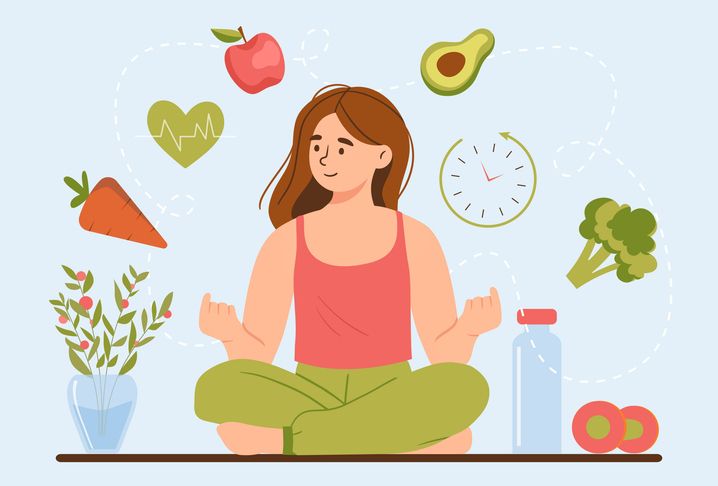
Caffeine can interfere with how your body absorbs certain nutrients—especially when consumed at the same time as meals. While this usually isn't a major issue for most people, it can have small effects on your skin over time if your diet is already low in key vitamins and minerals.
Iron and calcium absorption
When you drink coffee or tea with your meals, it may reduce how much iron or calcium your body absorbs. These minerals support healthy skin structure and help with oxygen delivery to skin cells. If you’re already low in iron or relying on plant-based sources, regular coffee consumption during meals could make it harder for your skin to get what it needs.
Other nutrients that support skin
Caffeine doesn’t directly block vitamins like C, E, or zinc, but it may reduce their absorption slightly if taken in high amounts with food. These nutrients help your skin heal, fight inflammation, and protect itself from environmental damage.
Easy ways to reduce the impact
If you're concerned about nutrient absorption, try drinking coffee between meals instead of during them. Keeping your diet rich in fruits, vegetables, and whole foods will also help your skin stay healthy—even with your daily cup of coffee.
Book Now to Experience
Acne Treatment
1 Minute Self-Registration
Date should not be before minimal date

Caffeine Can Lead to Excess Oil and Clogged Pores (In Some Cases)
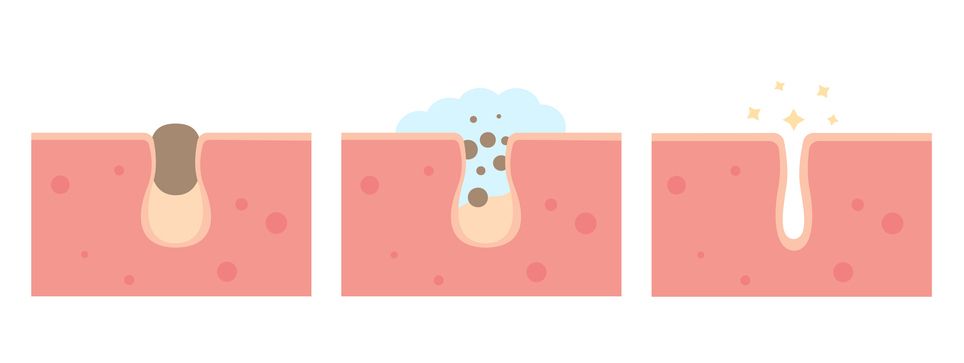
While caffeine doesn’t directly cause your skin to produce more oil, it can still influence the conditions that lead to clogged pores—especially when mixed with other lifestyle factors.
Stress and sleep affect oil levels
Caffeine increases cortisol, especially when consumed in large amounts or during stressful periods. Higher cortisol can signal your sebaceous glands to produce more oil. Combined with poor sleep, this can lead to more visible shine on your face and a greater chance of clogged pores.
It’s not just the caffeine
Sugar, dairy milk, and flavored syrups added to coffee drinks can make breakouts worse by promoting inflammation and disrupting your skin’s balance. These additions—not the coffee itself—are often the real cause behind acne flare-ups and pore congestion.
Topical caffeine is different
When applied topically, caffeine may actually help reduce redness and inflammation. It works as a vasoconstrictor, tightening blood vessels and calming reactive skin. This makes it useful in skin care for certain conditions, even though drinking too much coffee can have the opposite effect on oily or acne-prone skin.
If you're noticing more breakouts or clogged pores, take a look at what you’re putting in your coffee drink and how often you’re having it.

Caffeine Can Worsen Redness in Sensitive Skin
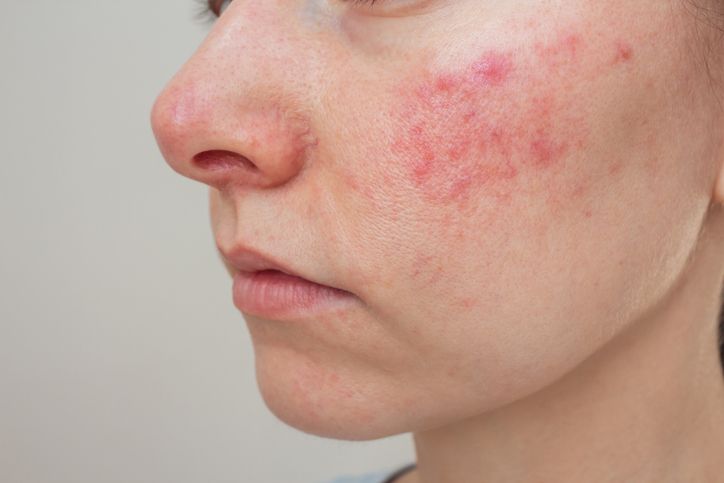
If you have naturally reactive or sensitive skin, caffeine may trigger more visible redness—especially after a strong coffee or when you’re already stressed or tired. For some people, caffeine makes the skin flush more easily or react to heat and skincare products.
Why caffeine can cause redness
Caffeine stimulates your nervous system and raises blood pressure slightly, which may cause blood vessels near the skin's surface to expand. This can make your face appear redder, particularly around the cheeks, nose, or chin. For people with rosacea or similar conditions, this effect may be more noticeable.
Heat and coffee together
Drinking hot coffee or tea can also raise your internal temperature. If you're already prone to flushing, the heat combined with the stimulating effects of caffeine may make your skin look redder or feel more irritated than usual.
What helps reduce redness
Some people find switching to decaffeinated coffee or drinking fewer cups per day helps reduce redness. You can also try drinking cooler beverages or spacing out your caffeine intake throughout the day. Using skin care products with calming, anti inflammatory ingredients can help reduce the appearance of redness, even if caffeine is part of your daily routine.

Treating Caffeine-Related Skin Problems: How This Acne Treatment Can Help
If your skin is breaking out, feeling oily, or looking dull—and you’ve already looked at your caffeine habits—the next step might be finding a treatment that can help reset your skin. While adjusting caffeine intake is important, professional care can give your skin the extra boost it needs. That’s where the Acne Treatment comes in.
How it relates to caffeine skin problems
Consuming caffeine, especially through frequent coffee consumption, can lead to issues like oily skin, clogged pores, and breakouts. This is often due to increased cortisol levels, dehydration, and changes in how the skin produces oil. When caffeine triggers these changes, skin becomes more reactive, more inflamed, and slower to heal.
This treatment is designed to tackle exactly those kinds of problems. It deeply cleanses the skin, calms oil glands, and restores hydration—key for anyone dealing with skin issues linked to caffeine intake.
How the Acne Treatment works
This is a non-invasive treatment that uses dual spiral suction and drainage technology to unclog pores and exfoliate dead skin cells. It gently removes buildup caused by excess oil and dirt, which often worsens with drinking coffee, especially if you're not drinking enough water.
After exfoliation, a medical-grade hydrating serum is applied to soothe and balance the skin. It helps reduce redness, calm inflammation, and prevent the overproduction of oil—common in people consuming caffeine regularly. The final step helps stimulate collagen production, promoting smoother skin texture and fewer future breakouts.
What are the benefits?
• Targets caffeine-related breakouts: Clears congested pores that can result from excess oil and dehydration.
• Hydrates dry skin: Rebalances moisture lost from caffeine’s diuretic effect.
• Calms inflammation: Helps reduce redness and irritation often triggered by cortisol spikes.
• No needles or downtime: A safe, gentle solution for acne-prone and sensitive skin.
• Improves skin tone: Helps fade acne scars and even out dull complexion caused by disrupted sleep and stress.
Whether your skin is reacting to too much coffee, excess sugar, poor sleep, or other factors, this treatment supports your skin from the outside in—making your caffeine-related skin concerns easier to manage.
Book the Acne Treatment today to see how this treatment can help balance your skin and reduce the effects of daily caffeine intake.
New Beauty's Acne TreatmentBook Now to Experience
Acne Treatment
1 Minute Self-Registration
Date should not be before minimal date
FAQ
Can Decaf Coffee Still Cause Skin Problems?
While decaf coffee has substantially less caffeine, it can still affect your skin due to its acidic nature and other compounds. You'll find that decaf contains tannins, which may interfere with iron absorption and potentially impact skin health. Additionally, if you're adding milk, sugar, or other ingredients to your decaf coffee, these additives could trigger inflammation or breakouts, especially if you have sensitive skin.
Does Applying Caffeine Topically Have the Same Negative Effects on Skin?
Topical caffeine actually works differently than consumed caffeine. When you apply caffeine to your skin, it can help reduce inflammation, constrict blood vessels, and protect against UV damage. Unlike drinking caffeine, which might trigger hormonal responses affecting your skin internally, topical application typically won't cause the same negative effects and is often used in skincare products for its antioxidant properties.
How Long After Quitting Caffeine Will Skin Improvements Become Visible?
You'll typically notice initial skin improvements within 2-3 weeks after quitting caffeine, as your body adjusts its hormone levels and hydration balance. More significant changes, including reduced inflammation, improved collagen production, and better skin barrier function, often become visible after 4-6 weeks. Your individual results may vary depending on factors like age, genetics, diet, and overall lifestyle habits.
Are Some Forms of Caffeine Worse for Skin Than Others?
Yes, certain forms of caffeine can affect your skin differently, with sugary caffeinated beverages being particularly problematic due to their combined impact of caffeine and high sugar content. While black coffee might primarily cause dehydration and cortisol spikes, energy drinks and sweetened coffee drinks can trigger insulin responses, inflammation, and collagen breakdown. Tea, especially green tea, tends to be gentler on your skin due to its lower caffeine content and beneficial antioxidants.
Can Certain Vitamins or Supplements Help Counteract Caffeine's Effects on Skin?
An ounce of prevention is worth a pound of cure when it comes to protecting your skin from caffeine's effects. You'll find that B-complex vitamins, particularly B6 and B12, can help regulate your body's stress response to caffeine, while vitamin C supports collagen production and fights free radicals. Additionally, magnesium supplements can help balance cortisol levels, and adaptogens like ashwagandha may buffer caffeine's impact on your skin.
Recommended Articles
COPYRIGHT© NEW BEAUTY MANAGEMENT LIMITED 2025. ALL RIGHT RESERVED.

